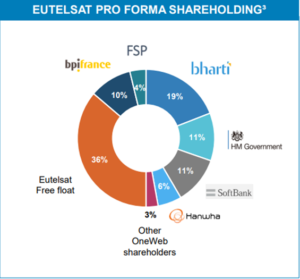Experts are predicting more deals like the Viasat (NASDAQ:VSAT) acquisition of Inmarsat and the Eutelsat (EPA:ETL) acquisition of OneWeb with the industry hungry for scale.
Global communications provider Viasat’s $7.3 billion acquisition of mobility specialist Inmarsat was announced last year, and geostationary Earth orbit (GEO) provider Eutelsat recently announced its acquisition of low Earth orbit (LEO) constellation builder OneWeb at a $3.4 billion valuation.
But acquisitions are not without risk, industry experts say.
Falling costs lift barriers to entry
Fundamental forces in the space economy are driving deals. Space, which was the exclusive domain of governments 40 to 50 years ago, is now being democratized as barriers to entry fall, Dara Panahy, partner at law firm Milbank, said Tuesday during the webinar, “Connectivity M&A dynamics and the outlook for consolidation,” hosted by Connectivity Business News and Milbank as part of the Connectivity Business Summit webinar series.
Falling costs are attracting companies looking to enter the space market, as well as technology and use cases that deliver revenue, Panahy added.
As markets grow and new investors arrive, the industry is growing and diversifying, “which means that we’re probably going to see more M&A,” he said.
Space M&A
The arrival of new, vertically integrated LEO mega-constellations — such as SpaceX’s Starlink and Amazon’s (NASDAQ:AMZN) Project Kuiper — is having a ripple effect on the space industry, Jing Li, SES (EPA:SESG) manager of corporate strategy and market intelligence, said during the webinar. The majority of small satellites launched over the next decade will be part of vertically integrated constellations such as Starlink and OneWeb, Alexandre Najjar, senior consultant at Euroconsult, previously told Connectivity Business News.
Governments, too, are recognizing the strategic importance of space and want their own satellites for national security reasons, SES’ Li added. The U.S. Senate this week allocated $2.2 billion to the Space Force’s budget for resilient space capabilities, highlighting the role of geopolitics in the space economy.
The need to provide multi-orbit connectivity as customers request it is also driving M&A — such as in Eutelsat’s acquisition of OneWeb, S. Sita Sonty, partner and associate director of aerospace at Boston Consulting Group (BCG), said during the webinar.
“Our margin on an absolute percentage basis will decrease, but, with the expanded total addressable market, the EBITDA on an absolute level — not a percentage level — will increase because you’re now capturing a larger part of the value chain.” — Jing Li, SES manager of corporate strategy and market intelligence
Users who might not have previously realized satellite connectivity was available to them are also now embracing it, Sonty said, noting “schools in remote villages in Saudi Arabia, remote hospitals in Ladakh, India, and border patrol between … Egypt and Libya” are increasingly tapping into satellites.
As GEO providers such as SES enter new markets, EBITDA margins will decrease, said webinar moderator Noel Rimalovski, managing director at investment bank and advisory firm GH Partners.
“Our margin on an absolute percentage basis will decrease,” SES’ Li said, “but, with the expanded total addressable market, the EBITDA on an absolute level — not a percentage level — will increase because you’re now capturing a larger part of the value chain.”
The importance of the ground segment
Cost-effective user terminals, which are less expensive than those currently on the market but still as powerful, are in development: equipment maker Kymeta is working on its u8 terminal and ALL.SPACE on Monday announced the S2000, a new modular terminal.
Starlink and Amazon are both working to deliver less costly terminals, SES’ Li said. “We know that this is important, too,” she added. “We’re working with multiple vendors very hard on it.”
In the future, the terminal could be the smartphone itself, BCG’s Sonty said. In fact, LEO communications provider Iridium (NASDAQ:IRDM) recently announced a development agreement to enable its tech on the smartphone and connectivity provider AST SpaceMobile’s (NASDAQ:ASTS) not yet launched constellation will deliver satellite connectivity direct to cellphones.










